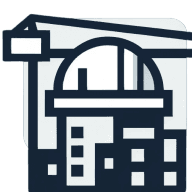How Green Roofs and Walls Enhance Sustainability in Construction
Imagine transforming cityscapes into lush, vibrant oases while tackling critical environmental challenges. This Q&A uncovers the innovative ways green roofs and walls are being used in construction projects to achieve this vision. From integrating green roofs for sustainability to achieving LEED certification with green features, here are six insightful perspectives. Explore how these strategies not only enhance urban aesthetics but also contribute significantly to sustainability.
- Integrate Green Roofs for Sustainability
- Reduce Urban Heat with Green Spaces
- Manage Stormwater with Green Infrastructure
- Support Urban Biodiversity with Green Areas
- Improve Air Quality with Green Roofs
- Achieve LEED Certification with Green Features
Integrate Green Roofs for Sustainability
In my construction projects, I've extensively integrated green roofs and walls to elevate sustainability, particularly during a project involving swimming and wave pools on upper-level podium decks above a casino in Macau, S.A.R. China. This project required close collaboration with structural engineers to ensure adequate structural support and waterproofing measures, allowing for the incorporation of lush landscaping. By strategically designing these areas, we not only provided aesthetic value but also promoted biodiversity and enhanced air quality. The vibrant greenery creates a welcoming atmosphere for tourists, showcasing how sustainable design can seamlessly blend with functional spaces. This experience underscores the importance of innovation and collaboration in making green features a reality in urban developments.

Reduce Urban Heat with Green Spaces
Green roofs and walls help to reduce the urban heat island effect. This means that these green spaces can lower the temperatures in cities, especially during hot summer months. As a result, buildings use less energy for cooling, which saves money and reduces greenhouse gas emissions.
Cooler city temperatures also make urban areas more comfortable for residents and reduce heat-related illnesses. Making use of green roofs and walls can be a significant step in creating more livable urban spaces. Consider adding green roofs and walls to new or existing buildings to make cities cooler and more energy-efficient.
Manage Stormwater with Green Infrastructure
Stormwater runoff can cause many problems in urban areas, including flooding and overwhelmed drainage systems. Green roofs and walls soak up rainwater, slowing its flow and reducing the amount of water that reaches the sewers. This alleviates pressure on drainage systems and minimizes flood risks.
By managing stormwater more effectively, cities can save on infrastructure costs and avoid water damage issues. Green infrastructure is a smart investment for healthier cities. Explore incorporating green roofs and walls to manage stormwater effectively and prevent flooding.
Support Urban Biodiversity with Green Areas
Urban areas often lack natural habitats, leading to a decline in biodiversity. Green roofs and walls create spaces where plants and animals can thrive, even in dense city environments. These green areas provide food and shelter for various species, promoting a healthier ecosystem.
Increased biodiversity can improve ecological resilience and provide recreational and educational opportunities for city dwellers. Enhancing urban habitats is crucial for balancing city life with nature. Prioritize the use of green roofs and walls to support urban biodiversity and ecological balance.
Improve Air Quality with Green Roofs
Air pollution is a significant issue in many cities, affecting the health of residents. Green roofs and walls can help improve air quality by filtering out pollutants and producing oxygen. Plants absorb harmful substances from the air and release clean oxygen in return.
This natural filtration system can lead to a healthier environment for city residents and reduce medical costs related to air pollution. Clean air is vital for a sustainable and healthy urban life. Consider implementing green roofs and walls to improve air quality and enhance public health.
Achieve LEED Certification with Green Features
Sustainable construction practices are increasingly important in the building industry. Green roofs and walls can contribute to achieving LEED certification, which signifies a building's commitment to environmental sustainability. LEED-certified buildings are recognized as having higher value and can attract more tenants or buyers.
This added value and recognition can make green infrastructure an attractive option for property developers. Pursuing LEED certification can set a building apart in the market. Incorporate green roofs and walls to enhance sustainability and boost the value of your construction projects.

